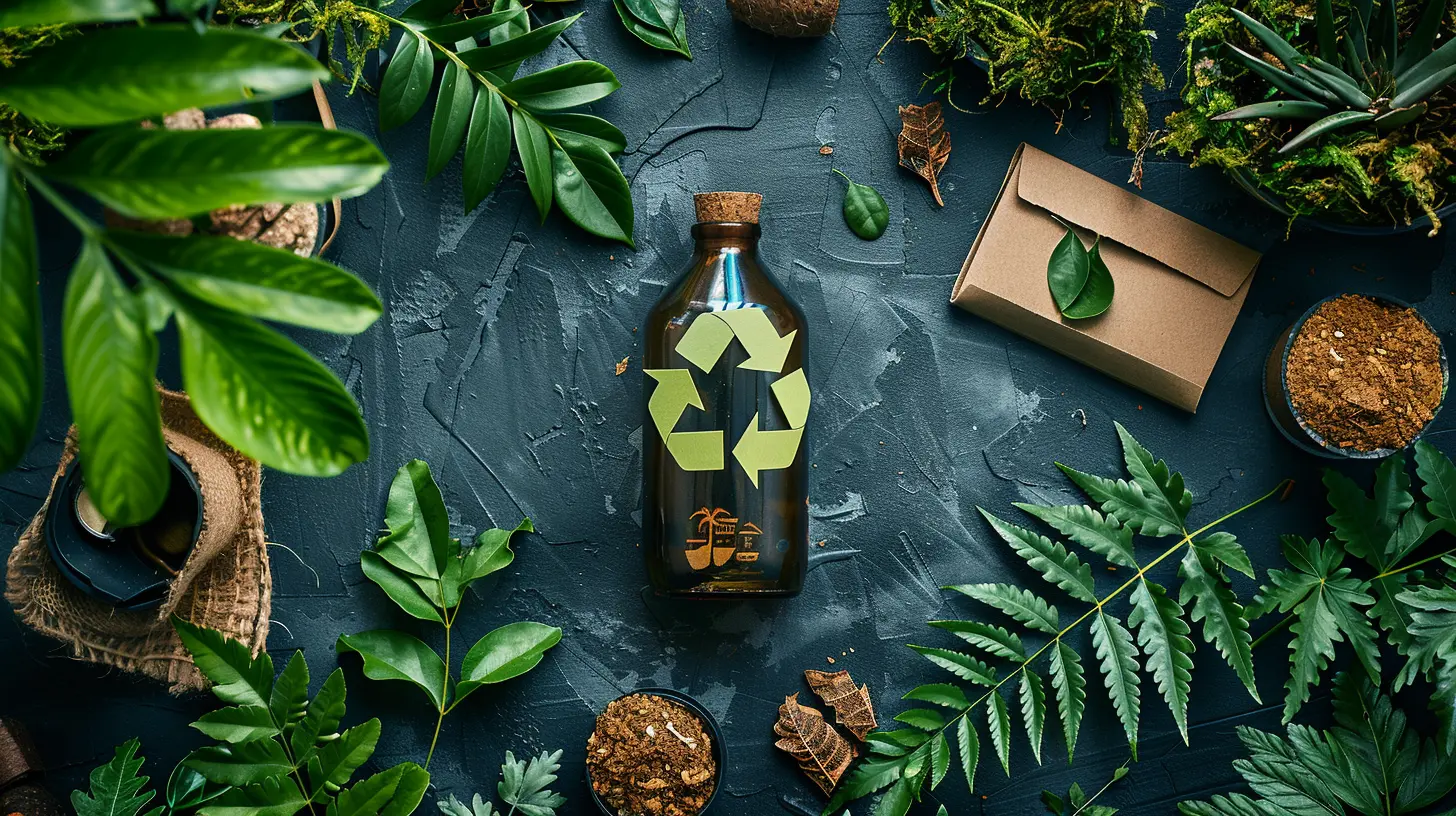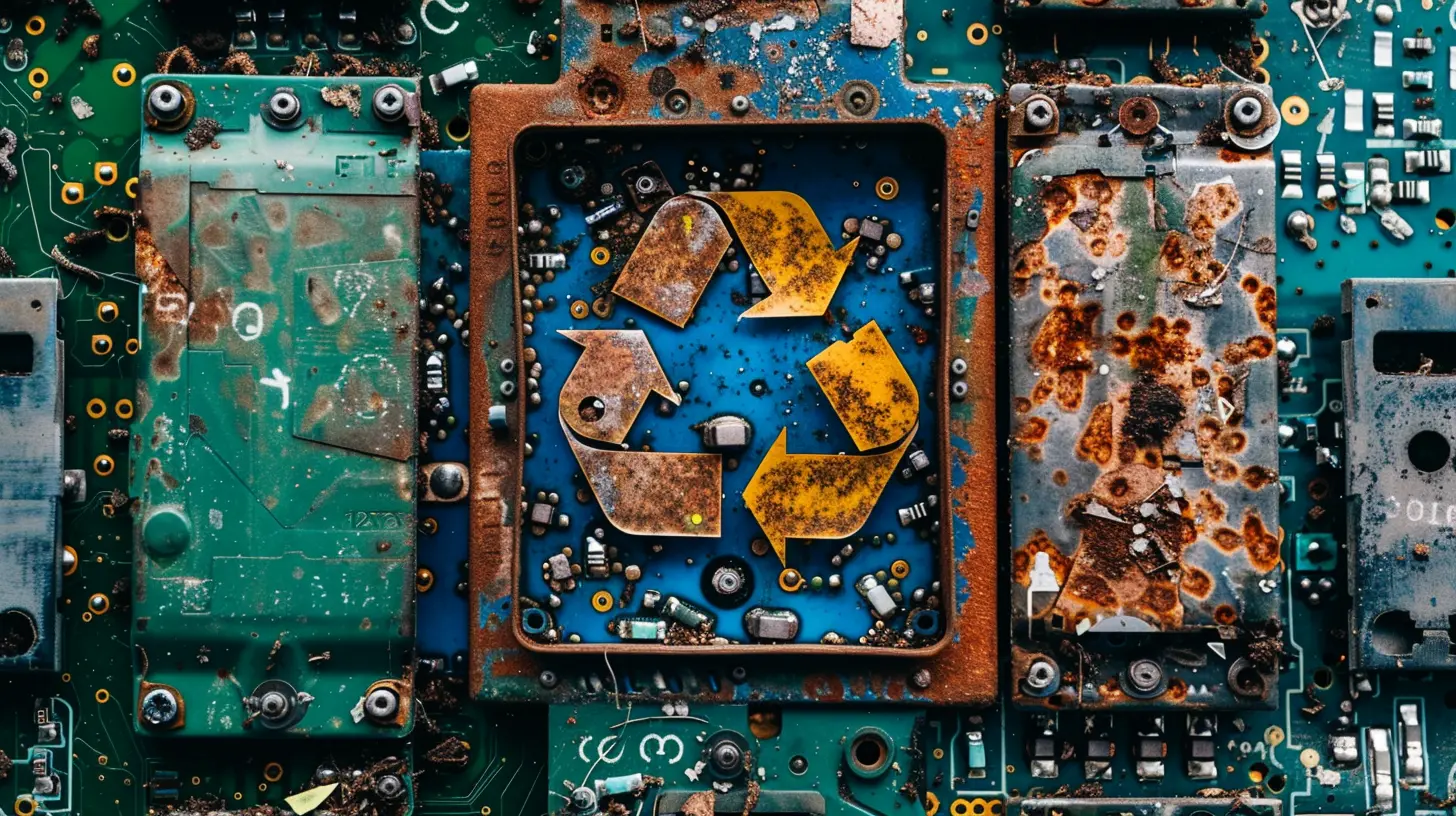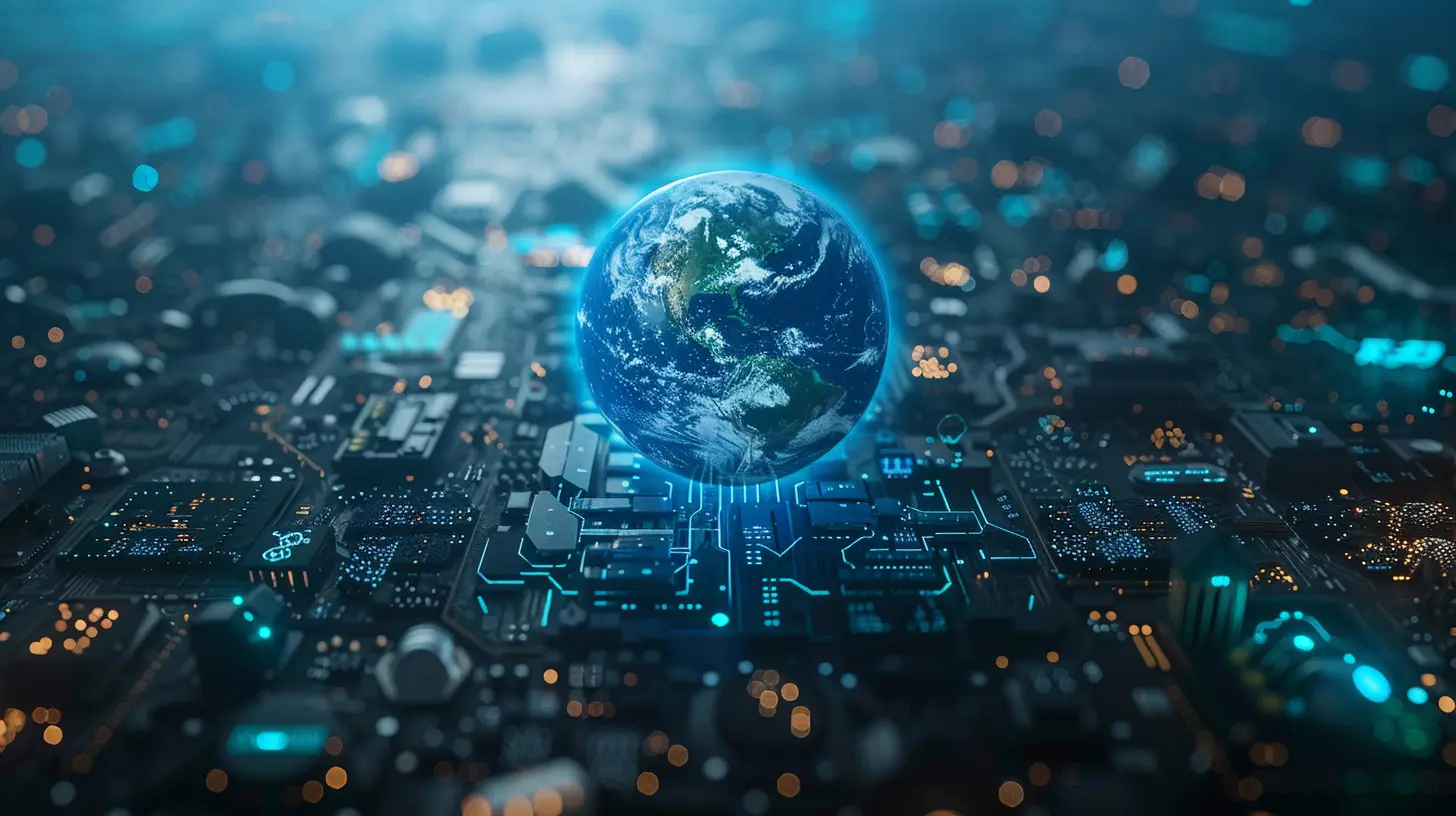The Role of Recycled Materials in Modern Tech Innovation
20 November 2025
Alright, let’s talk trash — literally. You know that old smartphone gathering dust in your junk drawer? The one you swore you’d fix or donate someday? Yeah, that thing might just be the unsung hero of the next big tech breakthrough. Welcome to the surprisingly glamorous world of recycled materials in modern tech innovation — where yesterday’s garbage becomes today’s gadget gold.

Wait, You're Telling Me Trash Powers Tech?
Oh absolutely. In a plot twist worthy of a sci-fi movie, the stuff we toss in our bins (or, let’s be honest, forget about entirely) is now the bedrock of cutting-edge innovation. We’re talking recycled plastics, rare earth metals, aluminum, and even glass — all getting a shiny new purpose in the flashy world of technology.Gone are the days when recycling was just about reducing your carbon footprint to avoid judgement at dinner parties. Now, it’s about keeping pace with global tech demand without draining the Earth dry.

Why the Sudden Obsession with Recycling?
Let’s not beat around the bush — the tech industry has a hoarding problem. It’s addicted to raw materials like cobalt, lithium, and nickel, which are essential for batteries, circuits, and just about anything with a power button. Mining these materials is expensive, energy-intensive, and, spoiler alert, not exactly great for the planet.So, what’s the cheaper, greener alternative? You guessed it — recycling! Suddenly, that phone you dropped in the toilet three years ago is looking like a VIP member of the tech innovation club.

The Tech Industry's Love Story With Recycled Materials
Oh, it's not just a fling. This is a full-on, rom-com montage-level relationship. Here's how recycled materials are giving modern tech a glow-up:1. Smartphones: Now With Less Guilt!
Did you know your latest iPhone may have recycled aluminum and rare earth elements in it? That's right — Apple and other tech giants are jumping aboard the sustainability train (with designer luggage, of course). They're turning factory scrap and old devices into sleek new gadgets that scream luxury but whisper, “I care about the planet.”Apple’s Taptic Engine (you know, the haptic feedback thing that clicks when you type?) is built using 100% recycled rare earth elements. It’s like they turned digital goosebumps into green brownie points.
2. Laptops on a Recycling Diet
Big brands are slimming down their eco-footprint. Dell’s Latitude series and HP’s Dragonfly laptops are embracing recycled plastics, aluminum, and even ocean-bound plastics. Yes, that’s plastic that nearly became fish food. Now, it’s helping you binge-watch Netflix. Full circle, baby.And don’t even get me started on Google’s commitment — they now use recycled materials in all their new Pixel and Nest devices. Alexa, define “corporate redemption arc.”
3. The Rise of Recycled Batteries
Ah, batteries — the lifeblood of the digital age and the bane of environmentalists everywhere. But fear not, because recycled lithium-ion batteries are entering the chat.Companies like Redwood Materials and Li-Cycle are literally mining value from old batteries, pulling out lithium, nickel, cobalt, and other goodies. These are then fed right back into the production line for EVs, phones, and renewable energy storage systems. Basically, it’s battery cannibalism — but make it sustainable.

Okay, But Is Recycling Actually… Effective?
Good question, skeptical reader. The short answer: not always. The long answer? It’s getting there.Recycling in the tech world is complicated. We're not just melting soda cans here. We're dissecting microchips, un-fusing alloys, and recovering precious (literally) metals from devices that weren’t exactly designed with “disassembly” in mind.
But innovation is catching up. Automated recycling systems, smart disassembly robots, and chemical recovery processes are making it easier, faster, and cheaper to breathe new life into old tech.
It’s Not All Rainbows and Reclaimed Copper, Though
Let’s be real — greenwashing is a thing. Some companies toss in one speck of recycled material and act like they’ve single-handedly reversed climate change. Others make bold sustainability declarations with more fluff than a marshmallow factory.Transparency, accountability, and real metrics are still works in progress. It's not enough to print “eco-friendly” in green font — consumers (that’s us!) are demanding receipts.
What’s Driving the Recycled Tech Revolution?
A lot of factors, actually. Let's break it down into bite-sized, tweet-worthy reasons.- Environmental Regulations: Governments are cracking down on e-waste and pushing for circular economies. Translation: recycle or risk fines that make CEOs sweat.
- Consumer Pressure: Millennials and Gen Z aren’t buying the “we’ll fix it later” excuse. They want products with less guilt and more purpose.
- Raw Material Shortages: Surprise! There isn’t an endless supply of cobalt under your backyard. Prices are rising, resources are dwindling, and companies are scrambling.
- Energy Efficiency: Recycling uses less energy than mining and refining virgin materials. It’s like choosing a home-cooked meal over fast food — better for you and the planet.
Innovation on Steroids: Recycled Materials Fueling Next-Gen Tech
Here’s where the story gets really juicy. Recycled materials aren’t just plugging holes in production lines — they’re unlocking whole new technologies.1. Flexible Electronics
Remember when phones were the size of bricks? Now we have foldable smartphones, rollable TVs, and screens that bend like yoga instructors. Recycled polymers are making these innovations possible, offering flexibility that traditional materials just can’t match.Who's laughing now, plastic?
2. 3D Printing With Recyclables
The nerds (I say this with love) in additive manufacturing are turning recycled plastics and metals into filament for 3D printing. That means we’re literally printing new parts, tools, and devices using yesterday’s castoffs. It’s like making a gourmet meal out of leftovers — if leftovers were thermoplastics.3. Eco-Friendly Wearables
Smartwatches, fitness trackers, and even AR glasses are getting eco makeovers. Some companies are experimenting with biodegradable or recycled straps, casings, and internal components. Soon, your smartwatch might tell you not just your heart rate, but how many dolphins it saved just by existing.The Circular Economy: More Than Just a Buzzword
You’ve probably heard this term tossed around in TED talks and white papers, but what does it actually mean?In simple terms, a circular economy is one where stuff is reused, refurbished, and recycled endlessly. Tech products are designed not to die in landfills, but to be reborn in future iterations. It’s reincarnation, but for gadgets.
The role of recycled materials here is crucial. Without them, a circular economy is about as functional as a flip phone in 2024.
The Future is… Recyclable?
If the current momentum continues, expect even more wild, futuristic developments:- Phones made entirely from recycled materials? On the radar.
- Self-repairing tech using reusable components? Already in beta.
- AI-powered recycling robots that sort and recover rare materials? Yep, they exist.
And who knows — maybe in a few decades, you'll be able to 3D print your own smartphone at home using the leftover casing from your smart fridge. Because why not?
So, What's the Takeaway?
Technology is no longer just about what's new — it's about what's renewed.Recycled materials are doing more than just reducing e-waste. They’re becoming the backbone of innovation, the secret sauce in sustainable gadgets, and the plot twist in tech's redemption arc.
Sure, we’ve got a long road ahead, and there’s plenty of green smoke and mirrors to sift through. But one thing’s clear: in a world of fast-evolving tech and finite resources, recycling isn’t just a nice-to-have — it’s the only way forward.
So, the next time you're tempted to toss that busted charger or ancient tablet — stop. You might just be holding tomorrow’s smart glasses in your hands.
all images in this post were generated using AI tools
Category:
Sustainable TechAuthor:

Kira Sanders
